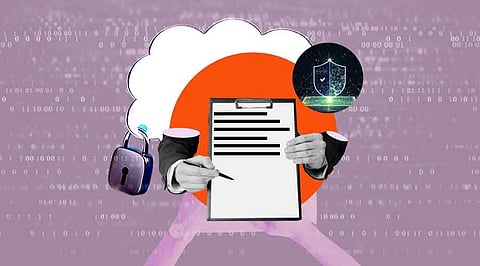

Databases are essential for storing and managing data, but they also pose security risks if not properly protected. Hackers can exploit vulnerabilities in database to steal sensitive information, cause damage, or disrupt operations. Therefore, it is important to follow some best practices to secure your database and prevent unauthorized access. In this article, we will share 10 tips and tricks to help you improve your database security and keep your data safe.
1. Specify your sensitive data- Finding the sensitive data in your database is the first step in safeguarding it. Personal information, financial information, or intellectual property may be included. Knowing which data is sensitive can help you to prioritize your security procedures.
2. Create a cybersecurity strategy- A cybersecurity policy is a set of guidelines that spells out how your company will safeguard its data. All facets of database security, including access control, encryption, and incident response, should be covered by this policy.
3. Create an incident response strategy- A document called an incident response plan describes how your company will react to a data breach or other security problem. The tasks and functions of important individuals should be specified in this plan.
4. Encrypt data- Implement encryption mechanisms to protect sensitive data stored in the database. This includes encrypting data at rest and in transit. Use industry-standard encryption algorithms and protocols to ensure the confidentiality of your data.
5. Regularly update and patch- Keep your database software up to date with the latest security patches and updates. Regularly check for updates from the database vendor and apply them promptly to address any known vulnerabilities.
6. Implement access controls- Set up proper access controls to limit privileges and permissions for database users. Follow the principle of least privilege, granting only the necessary permissions to each user or role.
7. Monitor and log activities- Enable logging and monitoring features in your database to track and analyze user activities. This can help detect any suspicious behavior or unauthorized access attempts.
8. Implement intrusion detection and prevention systems- Deploy intrusion detection and prevention systems (IDPS) to monitor network traffic and detect any malicious activities or attempts to compromise the database.
9. Educate and train users- Provide training and education to database users on best practices for data security. This includes password hygiene, recognizing phishing attempts, and understanding the importance of data protection.
10. Conduct routine security inspections- To find and fix any security flaws, you should undertake frequent security audits of your database. Professionals with the necessary training in security should conduct these audits.
Join our WhatsApp Channel to get the latest news, exclusives and videos on WhatsApp
_____________
Disclaimer: Analytics Insight does not provide financial advice or guidance. Also note that the cryptocurrencies mentioned/listed on the website could potentially be scams, i.e. designed to induce you to invest financial resources that may be lost forever and not be recoverable once investments are made. You are responsible for conducting your own research (DYOR) before making any investments. Read more here.
